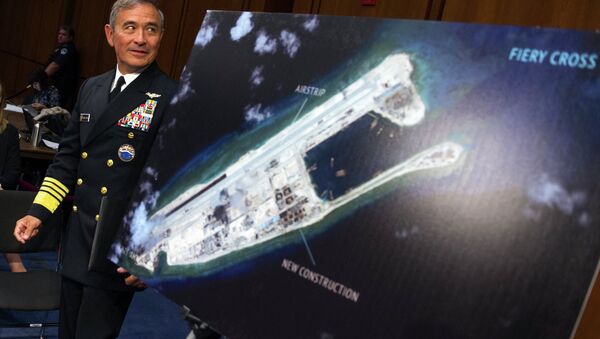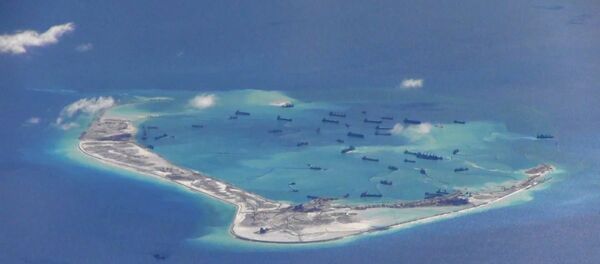The United States has long expressed outrage over Beijing’s construction of artificial islands in the South China Sea. That exasperation was only strengthened last April, when the Pentagon uncovered the construction of a military-grade runway on Fiery Cross Reef.
Now, recent images show that Beijing is building not one, not two, but three 3,000-meter airstrips in the Spratly archipelago. Located on Fiery Cross, Mischief, and Subi Reefs, the runways provide China with a strategic triangle which experts say could allow the military to conduct anti-submarine operations in the region.
Using Y-9 surveillance aircraft and Ka-28 helicopters, the Chinese military could scan deep water channels in the South China Sea and neighboring waterways.
That possibility has angered Pentagon officials worried that the islands could cut off open access to international waters in the region.
"Turning an underwater rock into an airfield does not afford the rights of sovereignty or permit restrictions on international air or maritime transit," US Defense Secretary Ash Carter said during a US Air Force conference, according to Reuters.
He added that the US would "fly, sail, and operate wherever international law allows."
But other experts have noted that the runways likely have more to do with nuclear deterrence than military aggression.
Zhang Baohui, a mainland security specialist with Hong Kong’s Lingnan University, pointed out that Beijing abides by a 50-year-old "no first use" policy in regards to nuclear weapons. That insistence on using nuclear missiles only as a retaliatory measure leaves the coast vulnerable to a submarine attack.
Beijing is also employing other anti-submarine strategies to defend its waters which also rely on installations in the Spratly islands. Jin-class submarines operating out of a Chinese naval base on Hainan Island could be coordinated by aircraft launched out of the Spratlys.
"That would provide greater security for China’s nuclear submarines to survive…and if necessary to execute their orders in wartime," Zhang told Reuters. "They would be safer than in open oceans where China cannot provide adequate support."
According to Commander Bill Urban, a spokesman for the Pentagon, Washington is actively monitoring Beijing’s developments.
A highly contested waterway, nearly $5 trillion in trade passes through the South China Sea annually. While China lays claim to most of the territory, there are overlapping claims by the Philippines, Vietnam, Brunei, Malaysia, and Taiwan.
While Washington has repeatedly described the island construction as aggressive, Beijing has asserted that it has every right to build within its own territory, and that the Spratlys will be used for some military purposes, but will largely focus on humanitarian operations.





